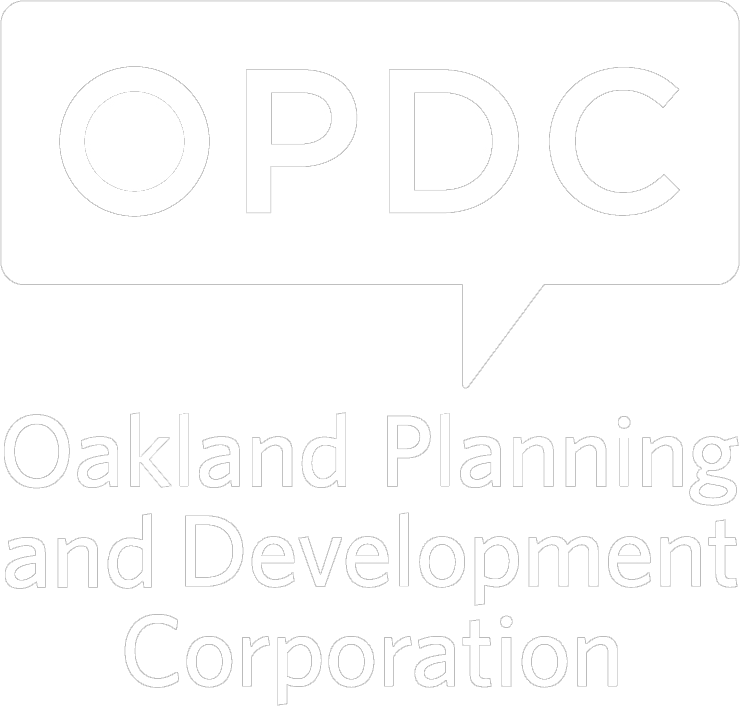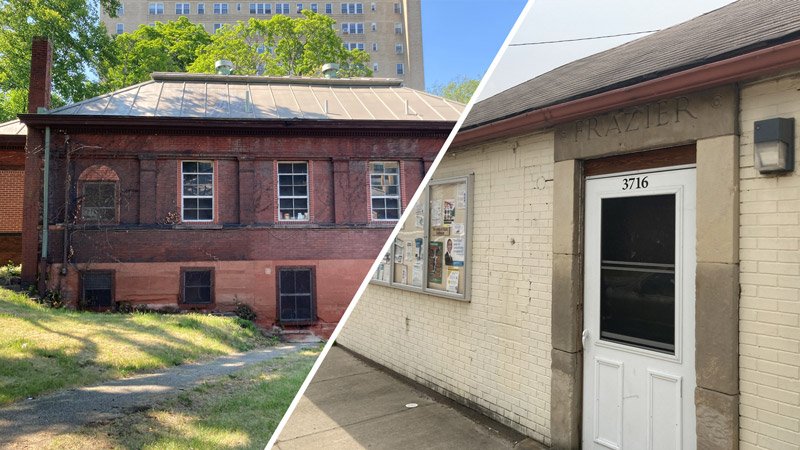An all-ages show at the Electric Banana in North Oakland, courtesy of Oyo Ellis.
Oakland was once home to a bunch of live music venues, many of which hosted all-ages shows. Those venues have long since closed—a loss not just for local musicians, but for the community as a whole.
Oyo Ellis (left) in front of the Electric Banana
Ahead of this month’s Let’s Talk community conversation on live music in Oakland, we’re looking back at three notable Oakland venues with Oyo Ellis, OPDC Facilities Manager and long-time member of Pittsburgh’s music scene, to inspire a conversation about how we might support all-ages entertainment here in the future.
Courtesy of Steve Bodner via electricbananaclub.net
The Electric Banana (3887 Bigelow Blvd.)
Active: 1977-1999
The Electric Banana began as a disco club in 1977, but “caught the first wave of punk going into the ‘80s,” says Ellis. The club had all-ages shows on Wednesdays and Sundays, with some bands even playing twice on the same day to accommodate younger audiences.
Graffiti (4615 Baum Blvd.)
Active: 1982-2000
“Graffiti was specifically a performance venue that was notable for hosting bands that would eventually break out,” says Ellis. When Green Day came through following the release of their Grammy-winning album Dookie, “there were little kids with their parents there!”
Club Laga (3609 Forbes Ave.)
Active: 1996-2004
3609 Forbes was home to a number of clubs including the Attic and the Upstage Lounge. “Laga was the last of an era,” says Ellis, who worked the door for six years. It could hold several hundred people and played host to all-ages shows with music ranging from underground rap to rock, punk, and metal.
Join Let’s Talk: Live Music in Oakland on Aug 16.













